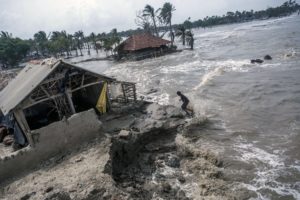An impending debt crisis is brewing in emerging economies, driven by crisis management in response to coronavirus and a downturn in sectors such as tourism and, critically, in confidence. This calls for innovation in sovereign debt markets, and specifically performance incentives of the kind already seen in wider capital markets, where China can be a leader, and where nature can benefit.
Many countries are already feeling the impact of a sovereign debt crisis and are muddling through. Global policymakers, from central bankers to governments and public development banks, are busy dealing with the immediate impact of Covid-19 and assessing their financial firepower and know-how to meet the challenge this debt crisis presents.
It is hard to forecast its impact: the level of financial interdependency in today’s global economy means a regional crisis can spread across asset classes, with broader implications for a financial stability already weakened by the response to coronavirus.
However, the extraordinary risks in the financial system are matched by an extraordinary opportunity for innovation and impact by individuals and financial institutions.
In the past, capital market innovation has continually improved, leading to more efficient market allocation of capital and spurring economic growth. From private placements following the great depression, to securitisation of mortgages in the 1980s, investment banks were the main source of this financial sector renewal.
Today’s great crisis, beyond Covid-19, is climate change and nature loss, and markets have already responded. In the past five years, the environmental space has taken the baton of market innovation, even revolution. We have seen a range of asset classes begin to assume their shared responsibility to assess and increase performance against environmental, social and governance scores.
In debt capital markets, we have seen corporates issue bonds with targets specifically linked to renewable energy, and a link to pricing for the bond as a result. Typical of such assets, Italian utility Enel last year issued a “sustainability linked bond” that pays a lower coupon (rate of interest) if the group meets its renewable power targets.
Such links to performance are not limited to environmental outcomes, or debt and equity asset classes.
In real estate, there has been a growing trend for owners to amend upward-only rent reviews to accept instead a turnover-based rent model, which allows tenants to pay rent based on sales performance. In public–private partnerships, payment mechanisms are shifting fixed regular payments to link to outcomes with societal benefits, which includes a multi-dimensional assessment of how the school or hospital is performing, to include reviews from staff, patients and league tables.
However, progress has not been equal, and in sovereign debt markets, innovation has been especially slow, with limited issuance linking coupons (interest rate) to performance, as seen in the private sector already.
Linking new sovereign debt to nature performance would help meet climate and nature challenges, as well as deliver value for citizens
Since the global financial crisis of 2008, the principal actors driving financial market innovation have changed. Once the domain of investment banks, this role is now more open, with central bankers and other public sector actors, including government finance ministries, able to step up and innovate.
There is a role in particular here for China, as a global growth leader, to see this embedded into sovereign capital markets and to support the development of new asset classes that can be effectively traded, priced and held by investors around the world.
Several years ago, I led the initial public offering of a wind power company in China, meeting local and regional investors first-hand. I was impressed by the depth of their knowledge and understanding, and the scope they had for playing a positive role in capital markets. The environmental challenges were well understood.
Linking new sovereign debt and refinancings to nature performance would help meet climate and nature challenges, as well as deliver value for citizens, and break the cycle of debt and debt service characteristic of conventional debt issuance.
How would this work? An emerging market country could issue debt, for general purpose, that allows it to meet its goals for citizens and development. Linked to the new issuance is an adjustment scenario, where a coupon and principal adjustment are hard-wired and verifiable to internationally accepted standards.
The debt service and principal repayment terms would incentivise issuing countries to improve their natural environment, defined in measurable outcomes, from designation of protected areas to lower deforestation rates, just as private corporates have been able to do. Fulfilment of nature targets would earn lower interest payments and reduced principal.
How a nature performance bond (NPB) can link to sovereign debt repayment terms
The coupon and principal adjustment would be met by a multilateral facility involving multiple creditors, which means the counter party, credit and liquidity risk are all unchanged or improved. The multilateral facility would need to be led by a major global economy, seeking to align capital markets to climate, and provide a trading hub for these new issuances to take place.
The world needs leaders to tackle the interlocking crises of nature loss, climate change and coronavirus, where science is clear on the links between an expanding frontier of forest destruction, carbon emissions and human contact with wildlife viruses.
As ever in capital markets, leadership equals innovation and opportunity, where the winners will be those that tailor their products to match the scale of the crises we face now and into the future.









